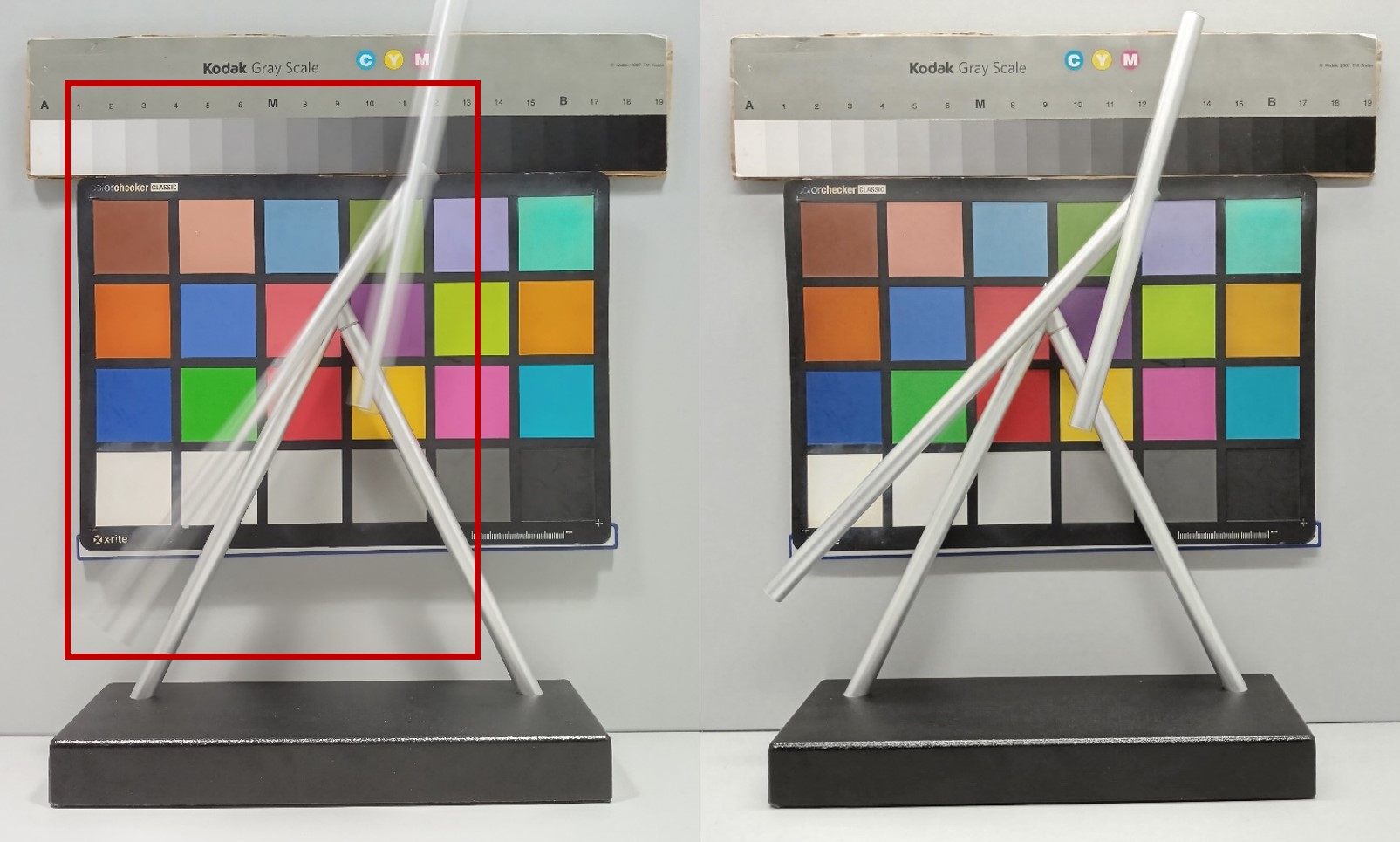Press release: https://en.gcoreinc.com/news/detail-66
GalaxyCore Unveils Industry's First DAG Single-Frame HDR 13Megapixels CIS
2023.08.11
GalaxyCore has officially launched the industry's first 13megapixels image sensor with Single-Frame High Dynamic Range (HDR) capability – the GC13A2. This groundbreaking 1/3.1", 1.12μm pixel back-illuminated CIS features GalaxyCore's unique Dual Analog Gain (DAG) circuit architecture, enabling low-power consumption 12bit HDR output during previewing, photography, and video recording. This technology enhances imaging dynamic range for smartphones, tablets, and more, resulting in vividly clear images for users.
The GC13A2 also supports on-chip Global Tone Mapping, which compresses real-time 12bit data into 10bit output, preserving HDR effects and expanding compatibility with a wider range of smartphone platforms.
High Dynamic Range Technology
Dynamic range refers to the range between the darkest and brightest images an image sensor can capture. Traditional image sensors have limitations in dynamic range, often failing to capture scenes as perceived by the human eye. High Dynamic Range (HDR) technology emerged as a solution to this issue.
Left Image: blowout in the bright part resulting from narrow dynamic range/Right Image: shot with DAG HDR
Currently, image sensors use multi-frame synthesis techniques to enhance dynamic range:
Photography: Capturing 2-3 frames of the same scene with varying exposure times – shorter exposure to capture highlight details and longer exposure to supplement shadow details – then combining them to create an image with a wider dynamic range.
Video Recording: Utilizing multi-frame synthesis, the image sensor alternates between outputting 60fps long-exposure and short-exposure images, which the platform combines to produce a 30fps frame with preserved highlight color and shadow details. While multi-frame synthesis yields noticeable improvements in dynamic range, it significantly increases power consumption, making it unsuitable for prolonged use on devices like smartphones and tablets. Moreover, it tends to produce motion artifacts when capturing moving objects.
Left Image: shot with Multi-Frame HDR (Motion Artifact) Right Image: shot with DAG HDR
GalaxyCore's Patented DAG HDR Technology
GalaxyCore's DAG HDR technology, based on single-frame imaging, employs high analog gain in shadow regions for improved clarity and texture, while low analog gain is used in highlight parts to prevent overexposure and preserve details. Compared to traditional multi-frame HDR, DAG HDR not only increases dynamic range and mitigates artifact issues but also addresses the power consumption problem associated with multi-frame synthesis. For instance, in photography, scenes that used to require 3-frame synthesis are reduced by 50% when utilizing DAG HDR.
Left Image: Traditional HDR Photography Right Image: DAG HDR Photography
GC13A2 Empowers Imaging Excellence with HDR
Empowered by DAG HDR, the GC13A2 is capable of low-power 12bit HDR image output and 4K 30fps video capture. It reduces the need for frame synthesis during photography and lowers HDR video recording power consumption by approximately 30%, while avoiding the distortion caused by motion artifacts.
Compared to other image sensors of the same specifications in the industry, GC13A2 supports real-time HDR previewing, allowing users to directly observe every frame's details while shooting. This provides consumers with an enhanced shooting experience.
GC13A2 has already passed initial verification by brand customers and is set to enter mass production. In the future, GalaxyCore will introduce a series of high-resolution DAG single-frame HDR products, including 32Megapixels and 50Megapixels variants. This will further enhance GalaxyCore’s high-performance product lineup, promoting superior imaging quality and an enhanced user experience for smartphones.




Wait, have they just patented the "unique" dual gain readout?
ReplyDeleteMaybe their implementation method is unique? can you find their patent application?
DeleteThis type of technology has nicely advanced since something pretty similar was presented by Photobit in 2001. The 2001 work had two different gain settings and two different sensitivity photosites within each pixel to yield 4 different signals that were dynamically fused to yield an optimal exposure. This work was part of the USC PhD thesis work of Michelle (Yibing) Wang, now with Samsung SAIT in Pasadena, CA and serving as a Director of IISS. The method to measure the DR accurately using diffraction pattern peaks was suggested by Scott Campbell and also appears in this paper.
ReplyDeletehttps://www.imagesensors.org/Past%20Workshops/2001%20Workshop/2001%20Papers/pg%20137%20YWang.pdf
Yes, the implentation is unique, not just dual gain readout.
ReplyDelete